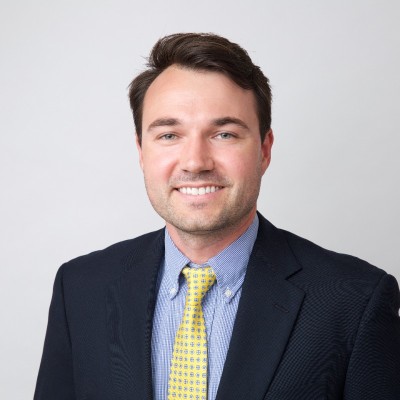A communication plan is a document that enables you to outline how you are going to effectively deliver a message to the appropriate stakeholders.
It helps to ensure that the stakeholders understand the message being conveyed to them. The plan should contain the message, the target audience, and the communication channel.
Businesses and companies can use a crisis communication plan. It can help them prepare for worst-case scenarios. It can also facilitate effective communication when conveying a message from top executives to employees. Project managers can use this plan to pitch their project ideas to stakeholders. It also allows the team to improve internal communication by structuring how information is shared among members.
It can help public relations professionals structure a cohesive message. It also enables the marketing department of a company to conduct successful advertising campaigns. Thus, if you want to effectively communicate a message, writing an effective plan is essential. Now that you know what it is, why it is important, and who can use it, it is vital that you understand how it can benefit you and how it should be written. This article elaborates on these details to make it easier to draft this document.
Free Editable Templates

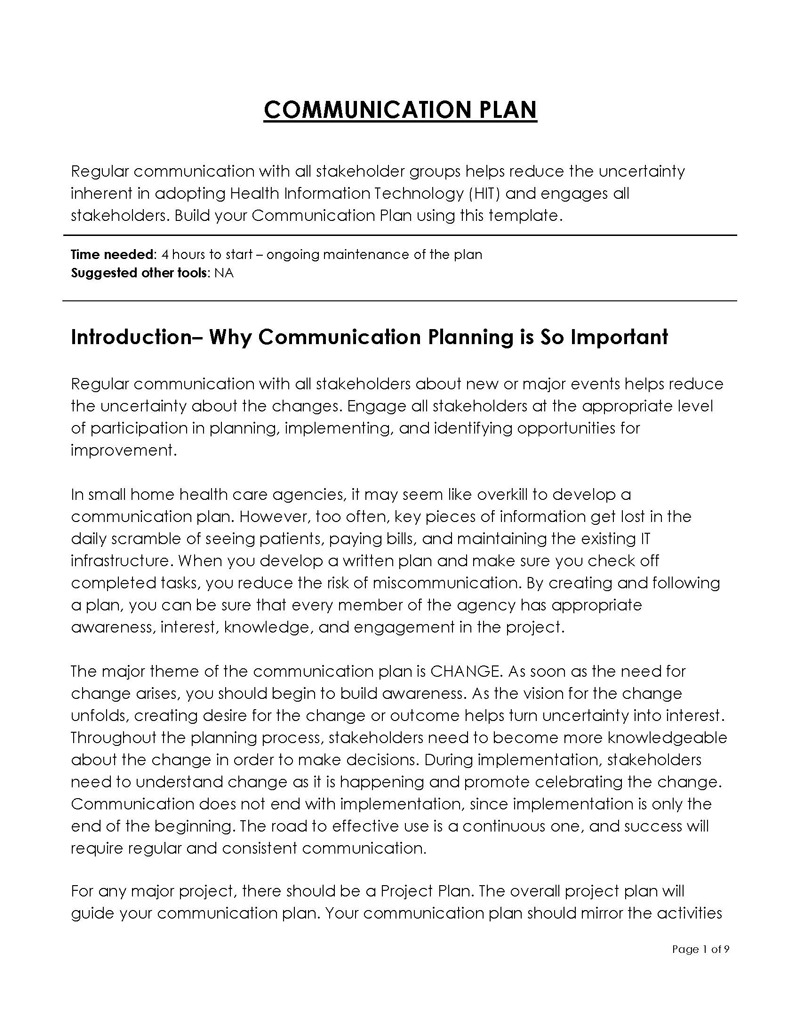

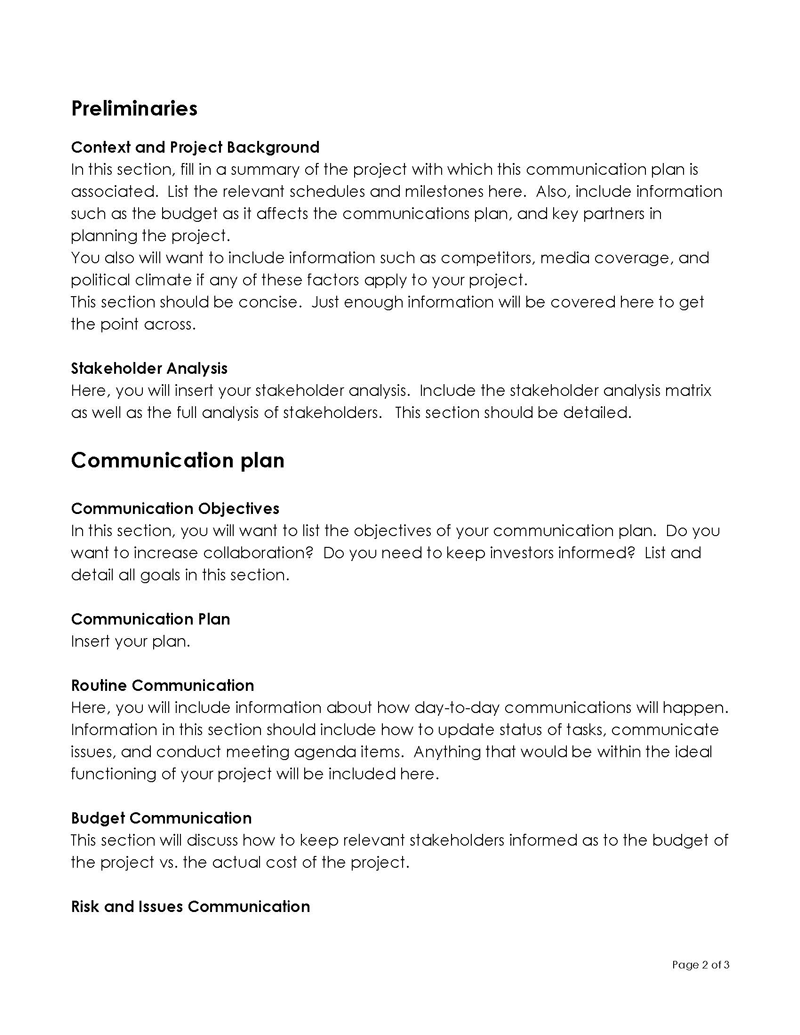
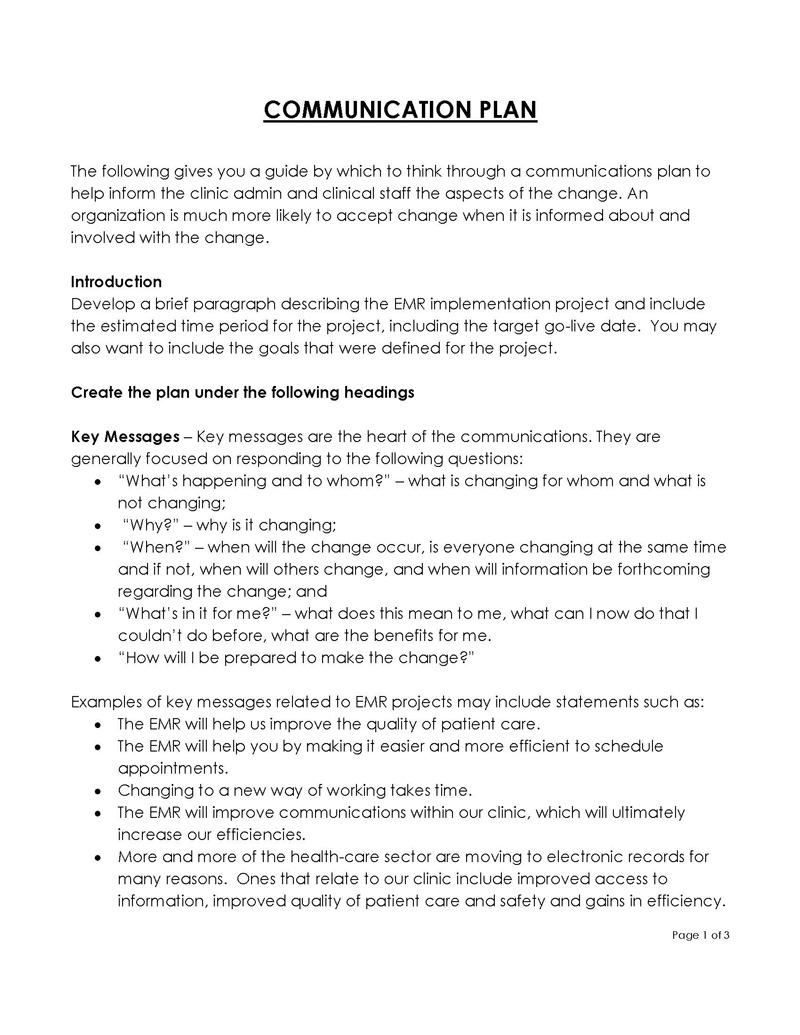
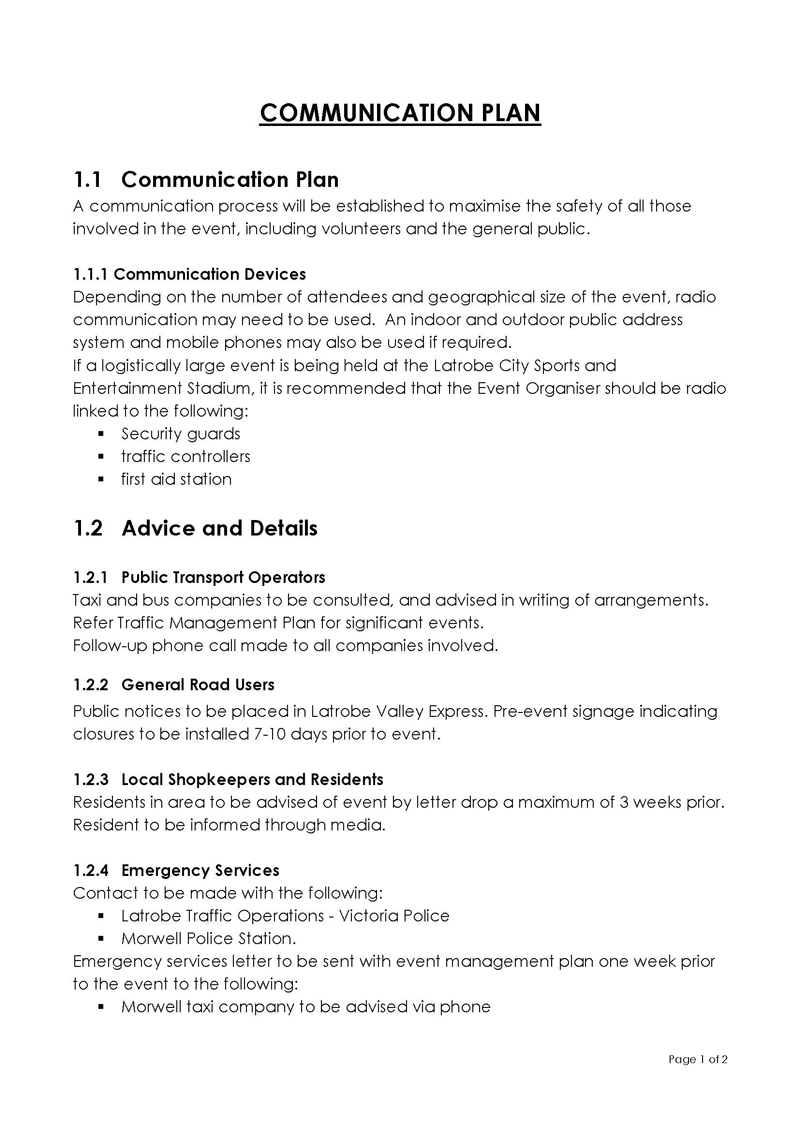
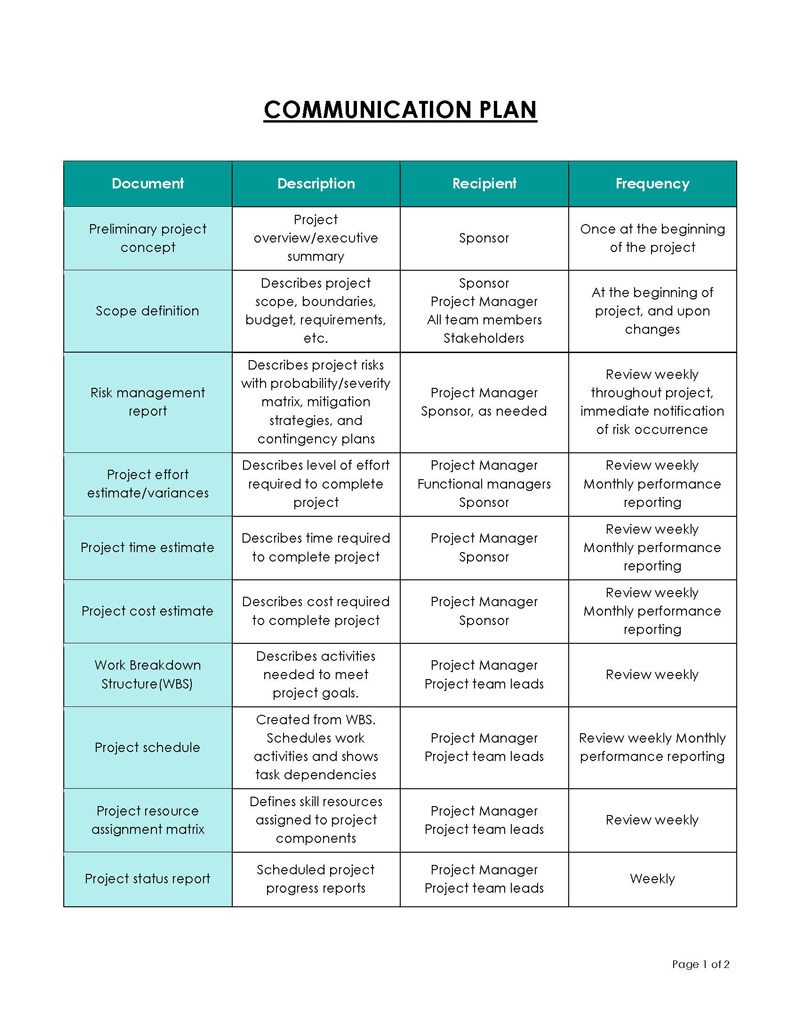

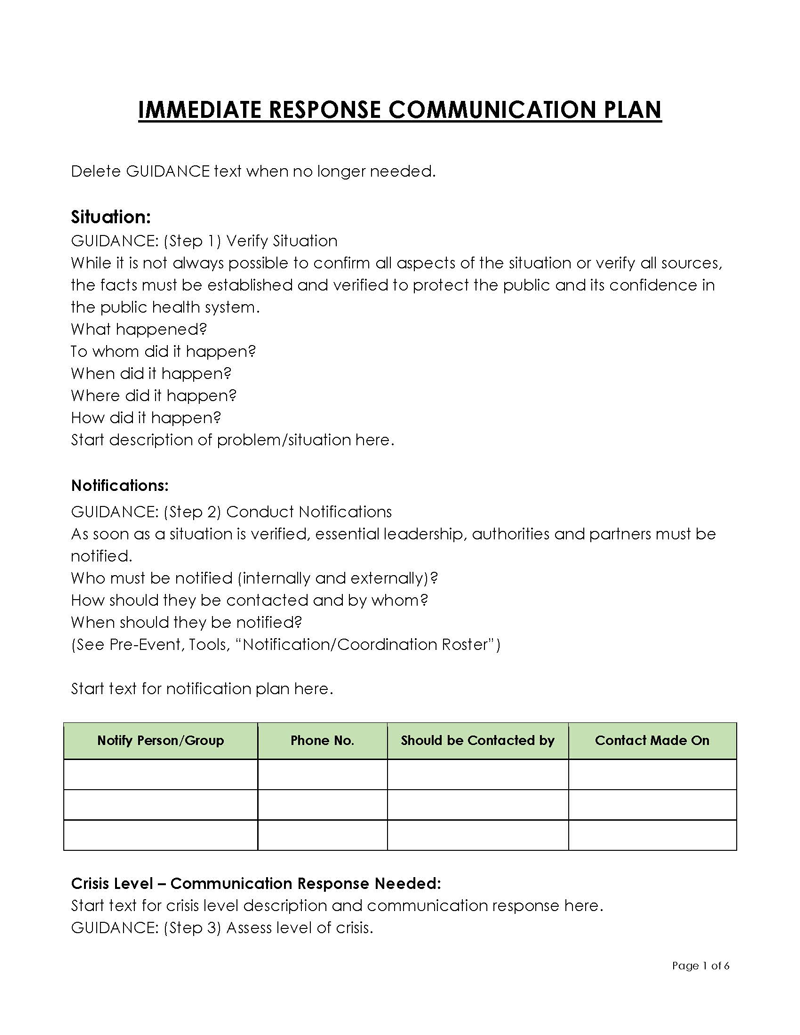
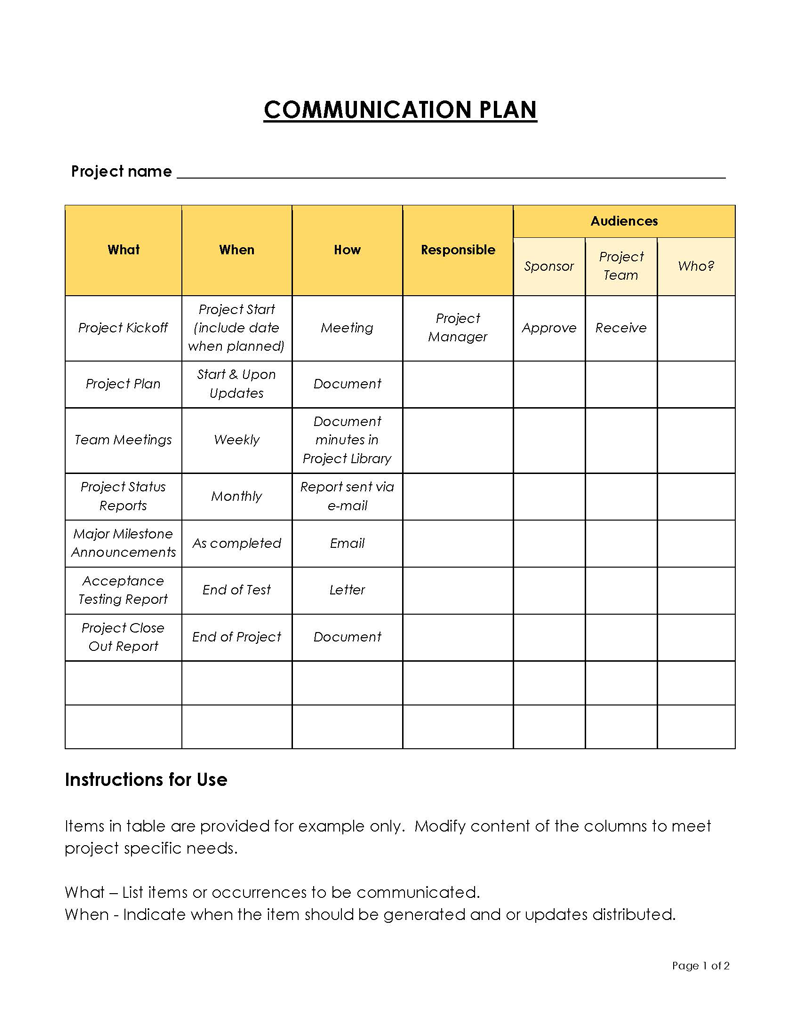


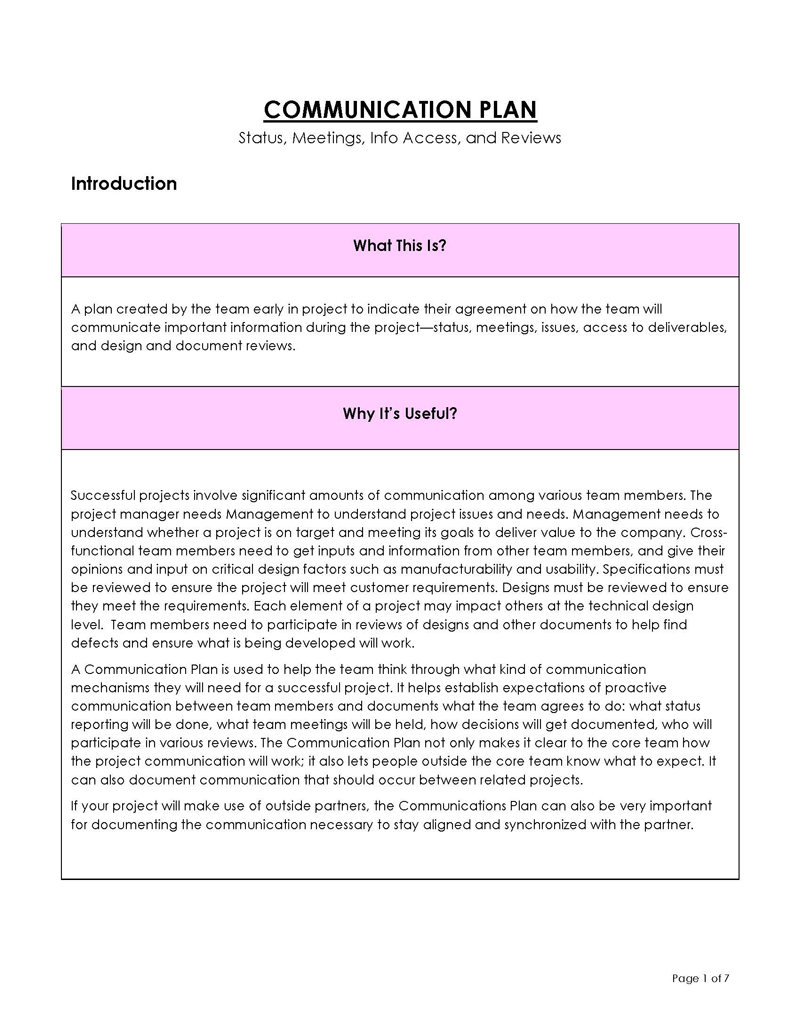



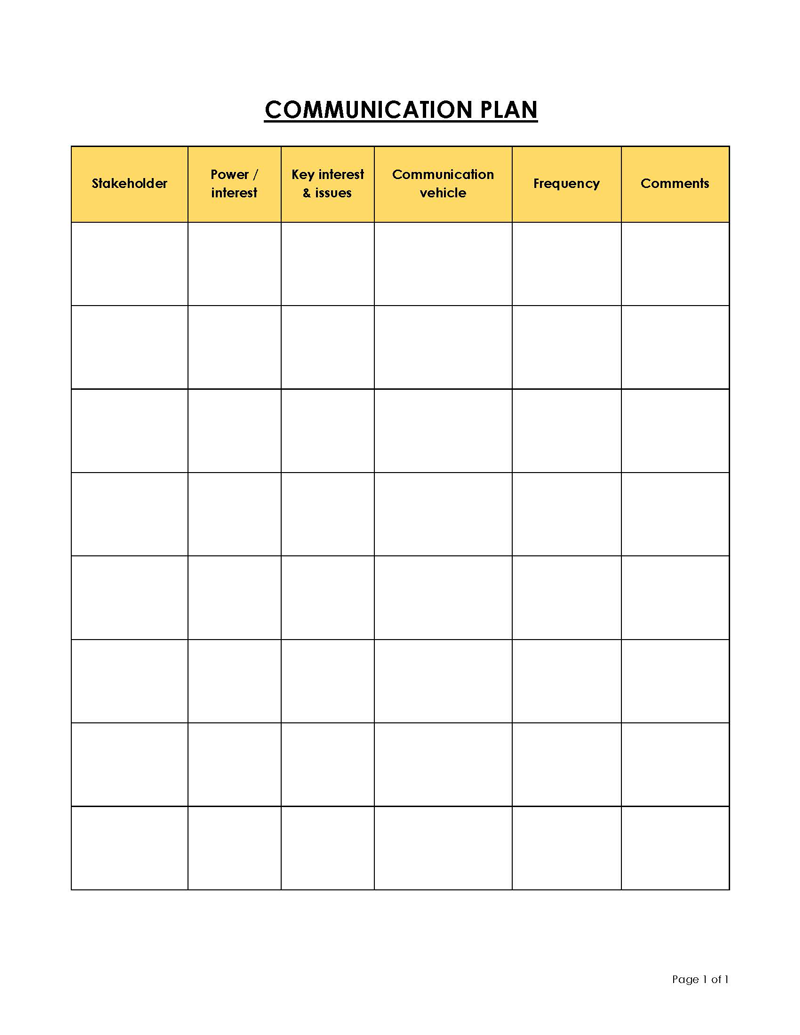

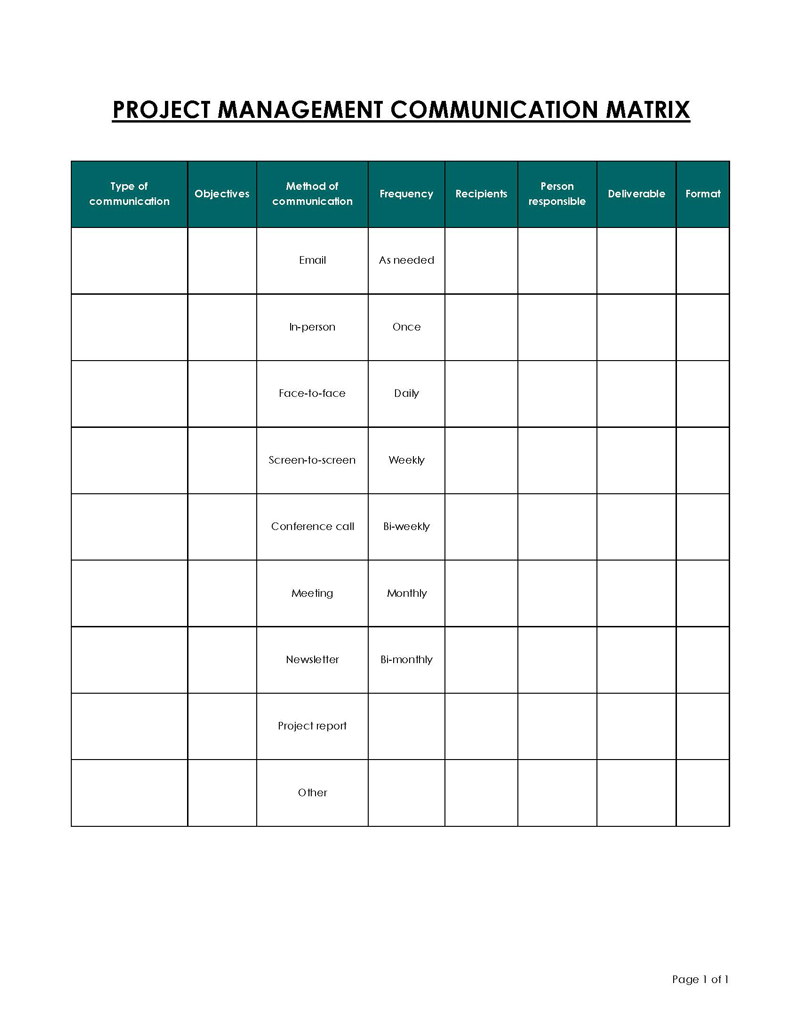
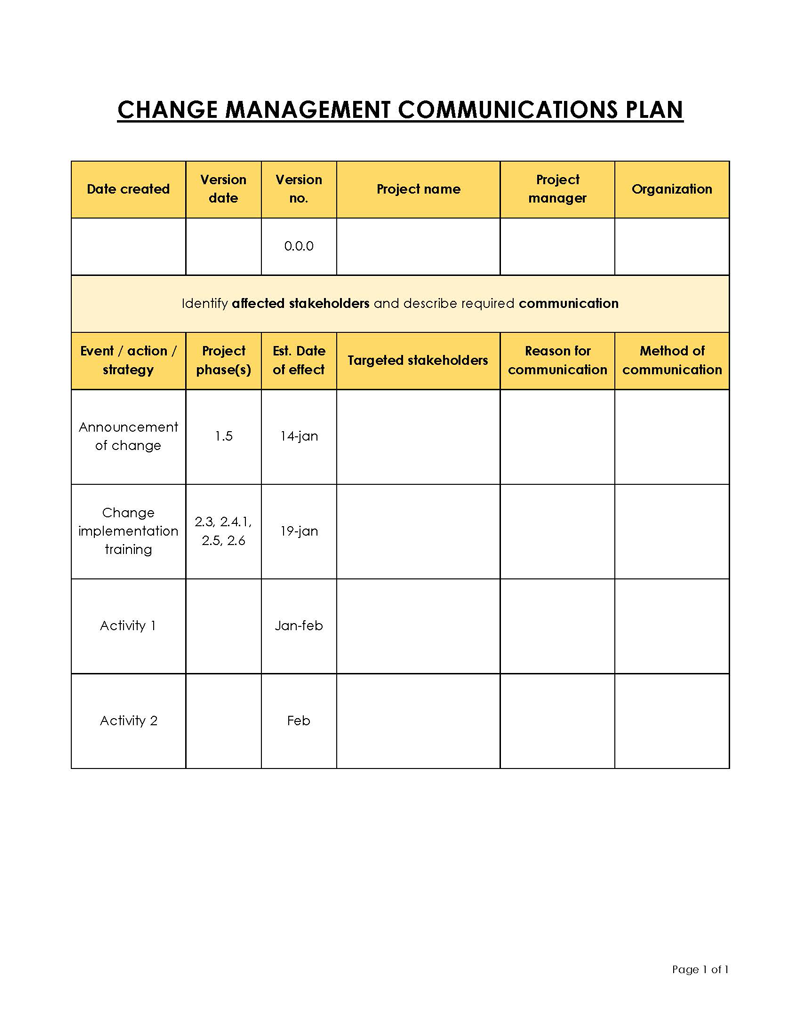
Why do You Need a Communication Plan Template?
Using a template enables you to convey your message in a way that addresses the needs of your clients. It allows you to reevaluate your approach to ensure that you achieve the goal of the message. It also helps you identify the best communication method to use, regardless of whether your message is formal or informal.
Other benefits associated with the plan include the following:
Facilitates effective communication
A template facilitates effective communication, which helps ensure the smooth running of the project. Effective communication also helps to impact how stakeholders feel about the project. If stakeholders have a clear understanding of the project, for instance, those who may have opposed it may change their minds.
To set and manage expectations
You can also use a template to set and manage client expectations. It helps ensure they know what to expect from the start and are, therefore, not disappointed with the project’s final outcome. It also helps them make preparations for what they can contribute to the project in the event they are required to do something.
For better stakeholder and client management
Using a template allows you to manage stakeholders and clients by ensuring that you maintain a good relationship with them through the information shared about the progress of the project. If the clients are frequently informed about the project’s progress, they will be more pleased and satisfied with the results. On the other hand, stakeholders are more likely to buy into the project if the alignment and realignment of the goals and milestones of the project are successfully communicated.
Helps with the project planning process
Each project’s needs are unique and cannot be compared to another as its goals, deliverables, budget, and timelines differ. These aspects, which are established during project planning, must be properly conveyed to stakeholders. A communication plan template helps you tailor the information to the project’s needs, easing the project planning process.
Writing a Communication Plan
Developing this plan without any guidance can be a difficult task. A well-written template should enable you to convey the message effectively. You can make sure you produce a thorough document by learning how to create the plan with the aid of a template. It will enable you to provide stakeholders with adequate information, and it can also be used multiple times.
The following should be contained in a template:
Understand your parameters
First, the parameters of the project should be considered. These are critical details about the project, such as the size of the project, deliverables, timelines, project team, and clients. It will assist you in determining what you are working on. It will also allow you to determine a communication style for the team and clients you are working with.
EXAMPLE
You may be creating the plan to help you introduce a new product. It helps you identify what the product is, how long it will take for it to be released to the market, who will be working on it, and who the target market is.
Perform a situation analysis
Secondly, the current situation should be analyzed in terms of health, capabilities, and communication status. Employees, coworkers, department heads, and stakeholders can help provide relevant information about the company’s current situation. The analysis should cover both the internal and external environment of the company.
A SWOT analysis will help you identify the internal strengths and weaknesses of the company and its external opportunities and threats. A PEST analysis will help you assess external factors that impact the company, including political, environmental, social, and technological factors. Lastly, the perception map will help you compare how customers view your brand against that of your competitors.
For example, a situation analysis can help you identify how you can improve your brand image with the plan, whether or not your customers are interested in it, and how it compares to what your competitors offer.
Define objectives and goals, stakeholders, and team members
The plan should define the goal of the message being communicated to shareholders and team members working on the project. The objectives of the plan should be specific, measurable, attainable, relevant, and time-based (SMART). It will help guide you through the creation of the message.
EXAMPLE
The goal of the plan may be to keep stakeholders and team members informed of the progress of the project and any changes you may have made.
Identify the audience
Next, the audience of the message should be identified. It will help you adapt the plan to what they need to know. When writing the plan for stakeholders, it is important to specify who they are. They may be investors, employees, customers, media outlets, or local government officials. Identifying the stakeholders may impact how you choose to convey the message.
For example, you may want to create a report with graphs or pie charts so that the plan can share the project’s progress with investors.
Outline and write your plan
You can outline and write your plan. Making an outline will help you determine the best approach and structure to formulate the plan. You should ensure that you consider the information you have gathered about the project, communication goals, how often you will need to communicate to stakeholders, and what you will be communicating.
Decide the media channels and create a strategy
Select a media channel that will also help you appropriately deliver the plan. Conducting research on what channel your audiences prefer can help you identify the selection process. The plan can be disseminated in hard copy or through email. The complexity of the plan should also be considered when selecting a communication method.
You should share your plan with your team. It will provide them with information on who has been tasked with delivering the messages. They can also help support the information you wish to provide. Your team can use the plan as a reference when communicating with clients.
It will enable them to deliver consistent and meaningful information to the clients. It is also important to constantly update the plan so your team members are aware of the changes you make.
Estimate a timeline
You should also consider how long it would take to execute the plan. Considering the estimated timeline will help ensure that you give yourself ample time to deliver the plan to the target audience.
For instance, if you need to communicate major changes to all the departments, consider how much time it will take to deliver the message so that each department understands how the changes will impact them.
Monitor and evaluate the results
Finally, monitoring and evaluating the results of your plan will help you identify areas where you can make improvements. It will also help you determine if the goal of the plan has been reached.
For example, if the goal of your plan was to attract more clients and that did not happen, you can evaluate it to determine the areas for improvement.
Types of Communication
It would be best to consider different types of communication when creating the plan. Understanding them will impact what you include in it.
The different types of communication include the following:
Weekly check-ins
A type of communication that allows you to communicate via phone call on a weekly basis. It allows you to convey information on the progress of the project, answer any questions your stakeholders may have, and update them on work that is completed. For example, a weekly phone call with stakeholders will allow you to answer the question about the deliverables of a project, communicate the progress of the project, request for approval of deliverables, among others
Weekly email reports
It allows you to convey information about the project’s timeline, budget, and millstone. It is usually sent on a Monday. You can communicate information such as the next step of the project, reviews from customers, specific timelines that have been met, among others.
Major milestone meetings
A type of communication that allows you to share information about major milestone deliverables. Your plan should consist of making advance preparation for the meeting by setting up the agender, inviting the attendees, and summarizing the deliverable that will be presented.
While at the meeting, review the agenda, present the deliverables to the team, answer or discuss issues that may arise, and make plans for the next steps that should be taken. You can also incorporate what will happen immediately after the meeting, like emailing attendees the meeting notes and identifying deliverables that have been approved.
Daily emails
It is a type of communication that allows you to keep stakeholders involved on a daily basis. Your plan may contain information that assists the team in carrying out its work, the needs of the project, decisions made over the project by stakeholders, among others.
Final Thoughts
A communication plan allows you to compose a well-structured message to convey to the target audience. It can be a useful tool in facilitating effective communication and helping you manage client and stakeholder expectations. It is also crucial to consider how it should be written. An effective plan should identify the target audience, convey a clear understanding of the project’s parameters, and define the message’s goals. You should consider the types of communication you can utilize to help you find the right approach when communicating with stakeholders.
